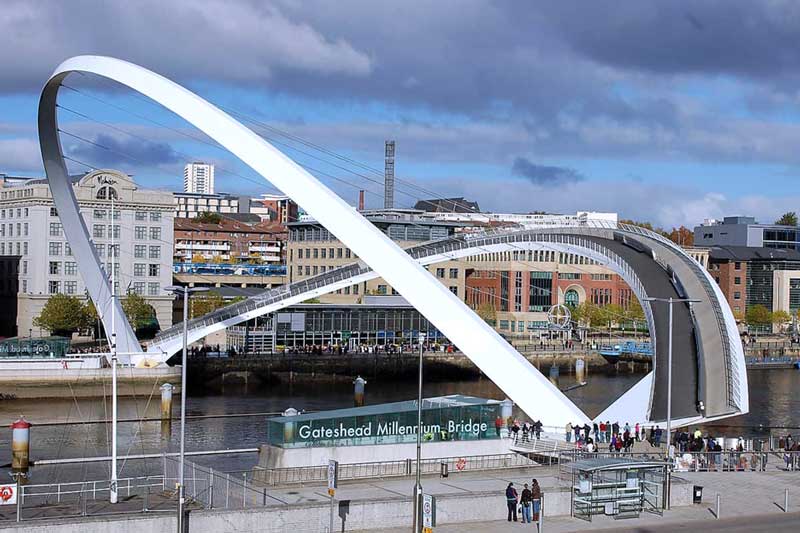Overview
It is another award-winning bridge from Wilkinson Eyre, the same architectural firm who designed the Gateshead Millennium Bridge as introduced in previous article. While we may find it hard to take our eyes off this bridge at first glimpse, it is also the designer’s own favorite.
Just as the designer Ian Firth put, "I love the fact that my work has included some of the very biggest bridges as well as some much smaller and more intimate ones… In fact, one of my favorites is the smallest: the little Bridge of Aspiration in London's Covent Garden, which is only 9 meters long! " This week let us continue our exploration into the world of stainless steel by the case of the Bridge of Aspiration.
The Bridge of Aspiration
The Bridge of Aspiration sits high above Floral Street in Covet Garden London, linking the Royal Ballet School to the Grade I listed Royal Opera House. Seen from a distance, the bridge looks like a concertina or an accordion. While it gives the dancers of the Royal Ballet School a direct access to the Royal Opera House, it is also a remarkable architectural landmark in London.

The Design
The Bridge of Aspiration project was commenced from a competition held in July 2001 and completed in 2003. It was thus designed, for several considerations as below,
- • The design should express a sense of movement, the fluidity and grace of a dance.
- • The 4th-floor buildings laying each side of the bridge is not perfectly symmetric, with the floor levels differing by 725mm.
- • To avoid damage to the world famous Royal Opera House and minimize the disruption to pedestrians walking underneath the bridge.
The unique design of the bridge to reflect the essence of a dance had posed difficulties on the bridge structural design, but the tight restrictions placed on the control of temperature, and humidity within an enclosed space and the load amount considerations made matters even more complicated.
The initial concept of a twisted square tube turned out to be an exquisite bridge constructed with 23 square frames, each twisted by 3.91 degrees to the next in sequential order. From end to end the bridge performs a quarter-turn (or specifically 3.91*23=89.93 degrees) in whole length to form a concertina shape.
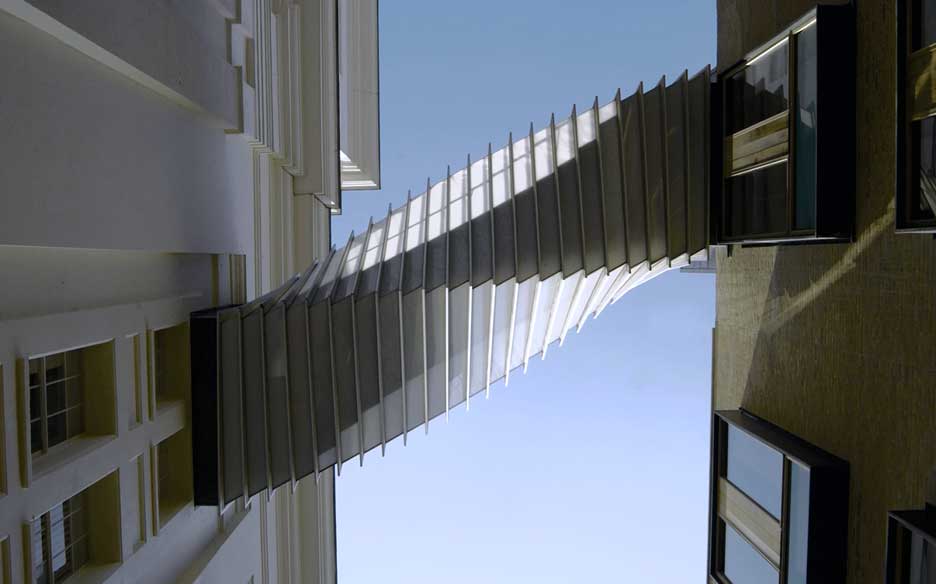
Design Aesthetics & High Performance
Designing this way resolves the asymmetric alignment in a beautiful way that creates a concertina effect, turning disadvantages into advantages. Meanwhile the dynamic and flowing structure evokes the elegance of the dancers, especially at night with the lighting on.
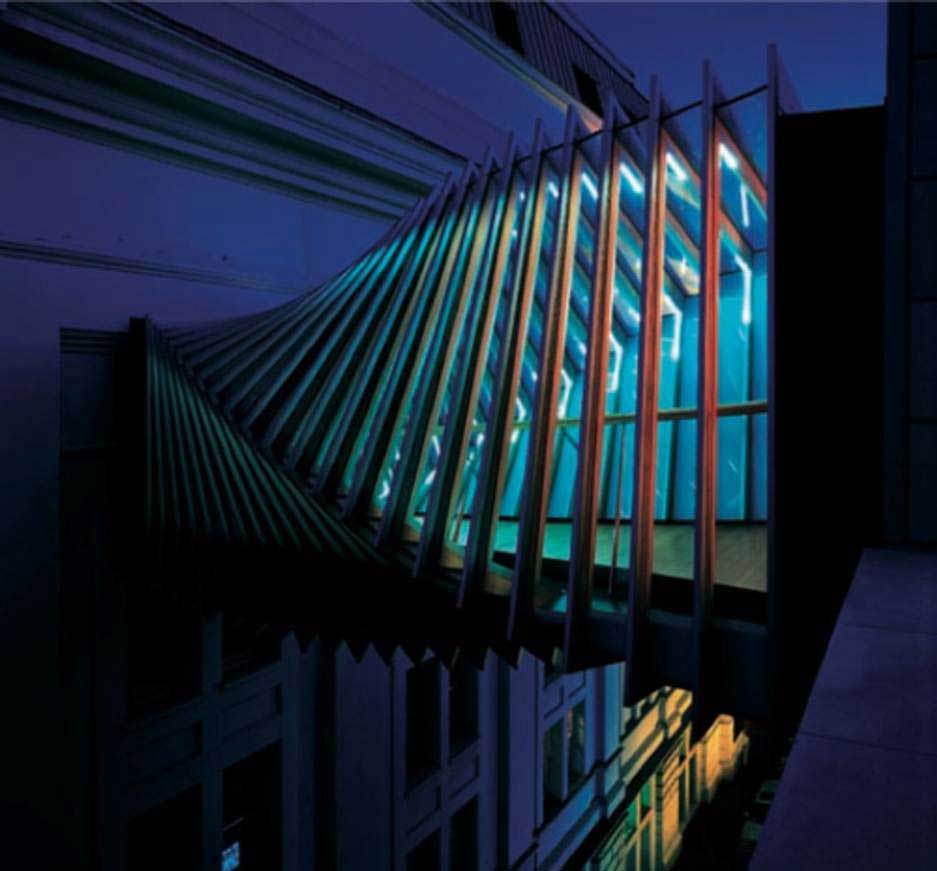
What’s better, since the frames are designed purposely parallel with the building faces and the street underneath, it prevents the bridge users from peeking over the apartments on the Ballet School side. The frames are thoughtfully spaced and wide enough to restrain views from the bridge up and down the street and sideways views are also prevented. And for the same reason, two opposite faces of the square are glazed with clear glass and the other two with opaque glasses to protect the ballerina’s privacy.

The Construction & Construction Material
The Bridge of Aspiration is widely known as an aluminum bridge for the key parts like the girders and spines are all made by aluminum. As a matter of fact, the Bridge of Aspiration is a bridge constructed with a combination of aluminum and stainless steel.
Aluminum as the key material is chosen mainly for two reasons: 1) minimum long-term maintenance to avoid future surface treatment; 2) the light weight desire to easily put the bridge into place with minimum disturbance to the Opera House. In the event, it took only two hours for installation in a single operation.
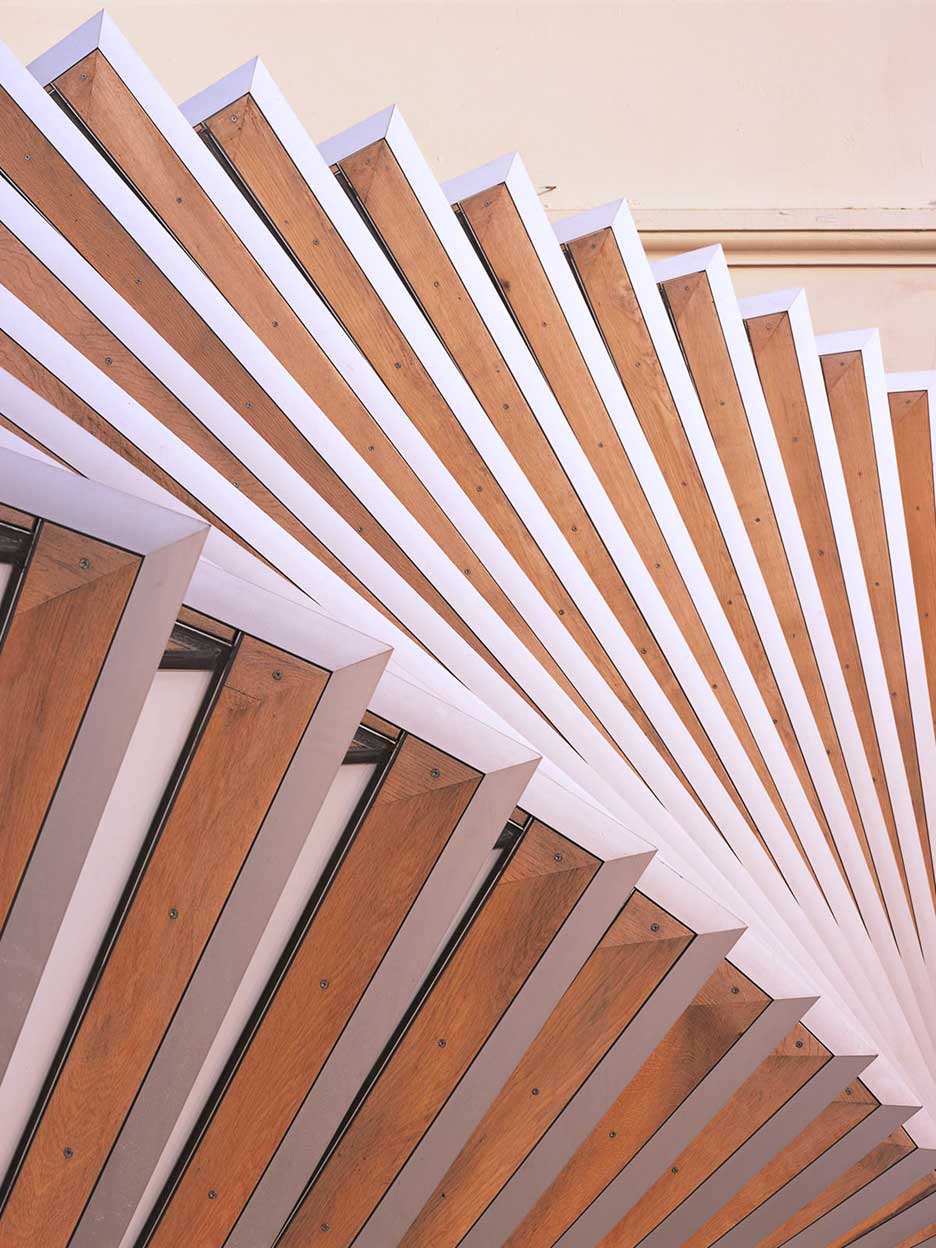
Stainless Steel Applied in the Bridge of Aspiration
Initially stainless steel was also considered for the bridge construction, but aluminum was chosen as the key raw material after a weight/ strength/cost analysis. Yet this couldn’t thoroughly eliminate the use of stainless steel. Instead, stainless steel serves as the reinforcing metal, partially used in the bridge attachments and stiffeners.
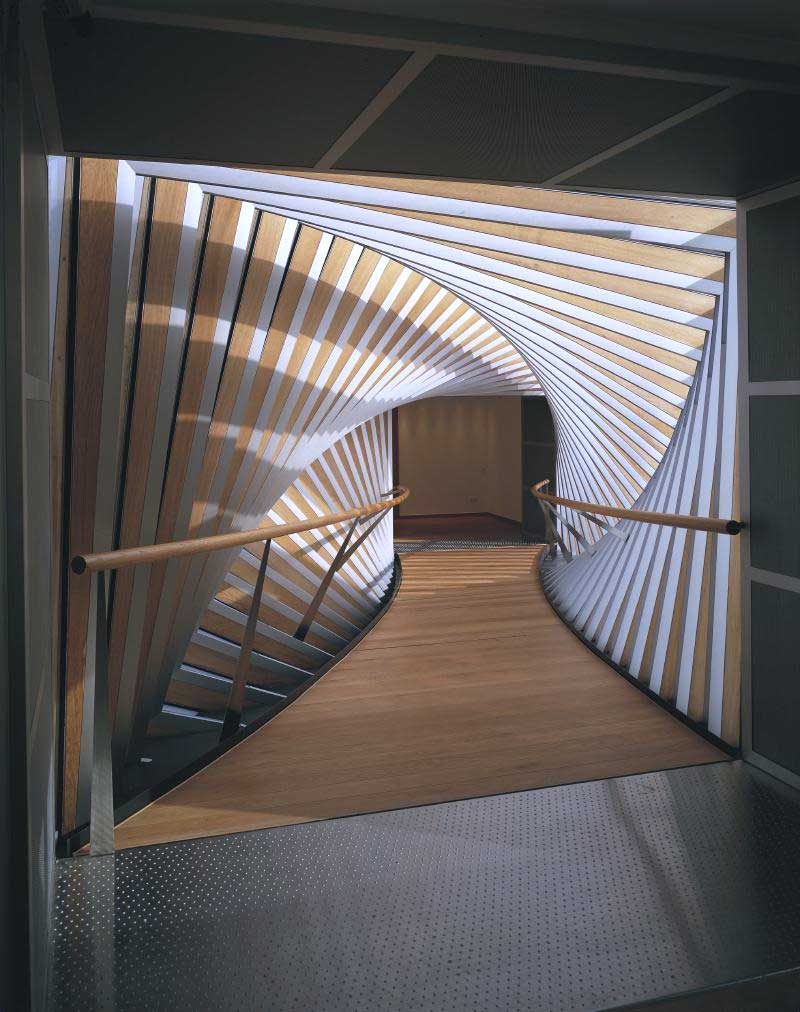
Stainless Steel at CIVMATS China
If you are looking for stainless steel materials from China like stainless steel bar and stainless steel plate as applied in the Bridge of Aspiration, welcome to CIVMATS. We produce and stock high quality stainless steel flat products and long products catering for your specific projects. Our experienced stainless steel professionals are your free consultants.
